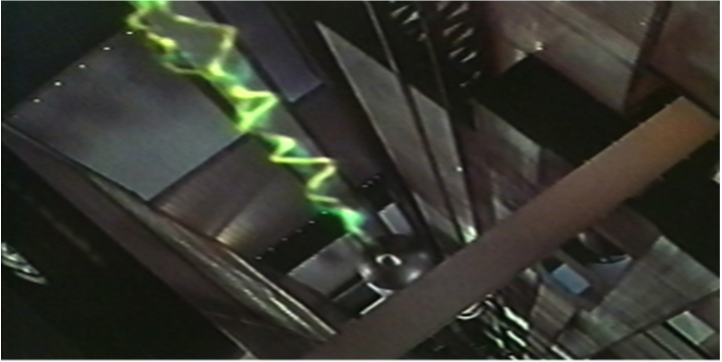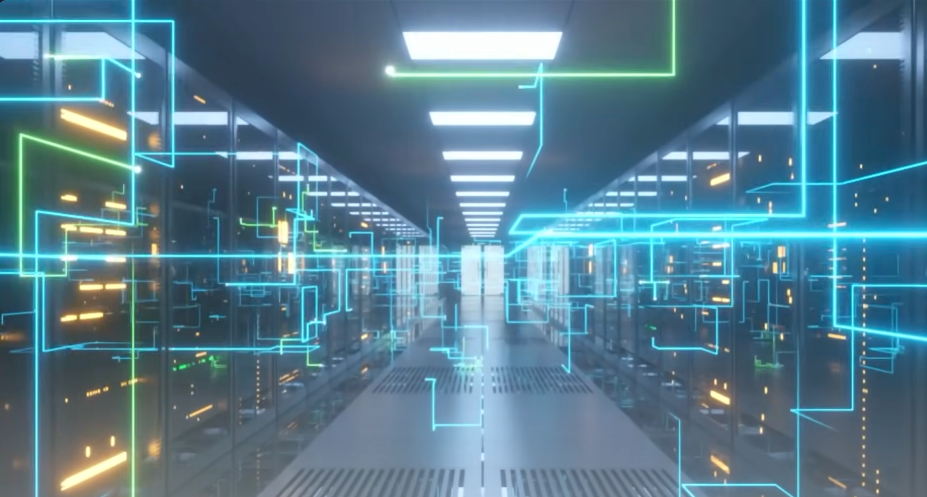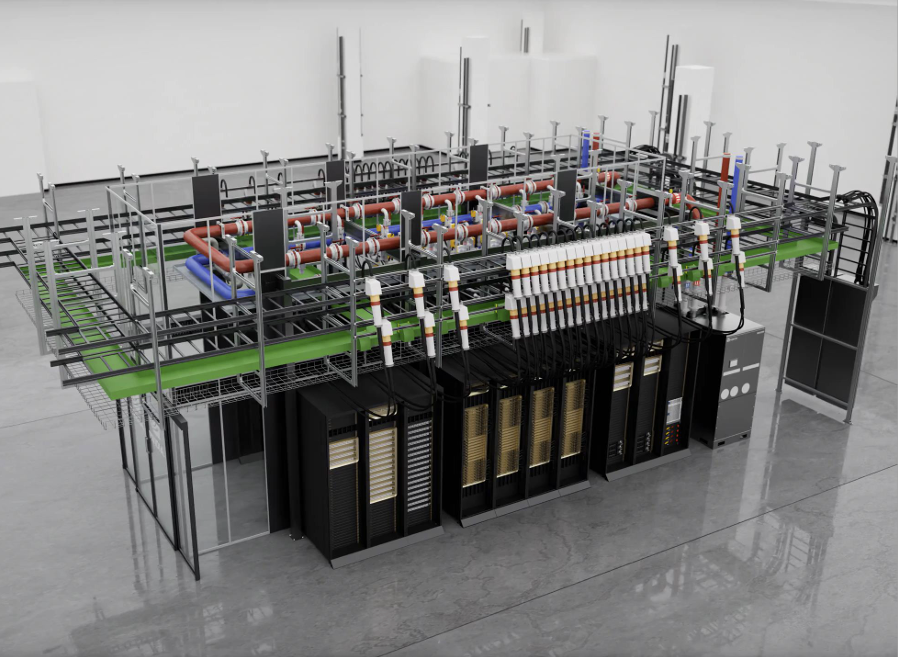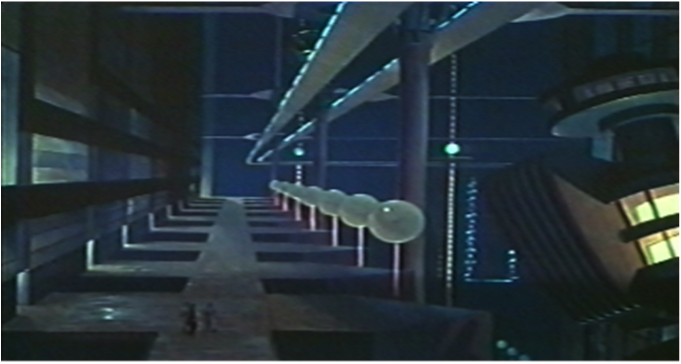If a car represents an AI supercomputer, then the GPU is the spark plug.
It was in the mid-21st century Standard Era—Earth reckoning 1956—when humankind’s earliest deep-space explorers first set down on the surface of Altair IV. The crew of the star cruiser C-57D had been dispatched across the dark interstellar currents to solve a mystery: the disappearance of the pioneering vessel Bellerophon, which years earlier had vanished without a trace while surveying the fourth planet of the Altairan system, Altair IV.

Upon landing, the crew quickly realized they were standing on the bones of a lost civilization. The Krell, a race once so advanced they had mastered technologies beyond human comprehension, were now nothing but a memory—extinct, their cities reduced to ruins buried by time. Stranger still, there was no sign of the Bellerophon or her crew; not a hull fragment, not a distress beacon, nothing.
Their exploration led them to an anomaly: an intelligent, autonomous machine, a gleaming, courteous construct of chrome and carbon fiber—who called himself Robu. Robu brought them across the empty plains and into the sanctum of the only known survivors on Altair IV: Dr. Edward Morbius, scholar of ancient minds, and his daughter Altaira, who had lived isolated on the alien world for decades.
In his home nestled within the shelter of an ancient ruin, Dr. Morbius revealed to the officers of the C-57D the crowning glory of the Krell—the Grand Machine, a titanic, unfathomable structure. Spanning 20 miles by 20 miles, delving downward through 7,800 subterranean levels, the Machine was an artificial mind so vast it dwarfed any concept of technology humankind had yet conceived. It was powered by 9,200 thermonuclear reactors and cooled by vast subterranean oceans of glacial water, circulating endlessly to prevent the core from igniting.

“How do you even interface with such a thing?” asked Commander Adams’ chief science officer, wide-eyed and wary.
“You don’t interface with it,” Morbius said, a sardonic smile flickering across his face. “You think about it while wearing a headpiece. It responds to the mind directly. But heed this: It obeys not words, not logic—only desire. Be very careful what you ask for. The Machine is modest. It will tell you anything—save for the secret of its own making.”
The crew gathered reams of data, knowing they stood before something far beyond their time. Their ship’s data banks brimmed with recordings, schematics, and partial blueprints. With a heavy sense of awe—and a healthy measure of fear—they departed, the C-57D lifting away from Altair IV’s twilight surface, vowing one day humanity would build its own thinking engine.
Seventy-three Earth years later, in 2027, the dream became a tangible reality. Within the domed laboratories of the New Silicon Confederation—the evolved descendant of the long-ago Nvidia Corporation—led by Dr. Jesran Huron, visionary engineer and sovereign of quantum cybernetics, unveiled to the world the Kyber-class Ultra super AI core. Shimmering behind protective meta-glass, the Kyber core pulsed softly, an embryonic star of human aspiration. It would not merely compute; it would dream. A living engine of thought, born from the ashes of forgotten Altair IV, reaching out across the void to seize the future and unburden humankind.

Kyber was constructed from astronomical numbers; no machine was ever built with such ambition and scale, and more than one wondered if it even could be built. With 576 Rubin GPUs delivering 15 EFLOPS and estimated to have 45,000 cores per GPU for a total of 26 million cores, 2,304 192GB memory chips, 442,000 billion bits of memory, 144 light-speed NVLink switches, 1,300 trillion transistors, and 12,672 Vera CPU cores, it would be the biggest, most powerful AI supercomputer ever—and not only one machine would be built.
“It seems like science fiction,” muttered more than one observer, gazing through the reinforced glass into the humming heart of the Rubin AI core. “The numbers… they’re just too astronomical to be real.”
Once upon a time, the titanic Krell Grand Machine had sprawled across 400 square miles of subterranean vaults, stretching thousands of levels into the planet’s mantle, a labyrinth of impossible engineering lost to the annals of prehuman mystery. That alien machine, constructed millennia before Earth had even discovered the transistor, required armies of reactors and cyclopean infrastructure to maintain even basic functionality.
But now, Earth’s own technological heirloom—the Nvidia Rubin Ultra-Intelligence Complex—required nothing more than a single, temperature-stabilized chamber. It occupied less physical space than an old Terran football stadium, yet it pulsed with incomprehensible intelligence, eclipsing the Krell’s ghostly remnants by orders of magnitude.
This miracle was the result of nearly a century of relentless development in quantum entanglement computing, memristive neural lattices, and micro-miniaturization. Thanks to molecular-scale processors woven into diamond substrates and powered by zero-point fusion cores, the Rubin AI Complex had condensed an entire city of supercomputing capability into a dense block the size of a couple of cargo containers. It could simulate every brain on Earth and still have cycles left to predict solar weather patterns across the next 10,000 years.
Engineers called it a singularity node.
Strategists called it humanity’s best weapon.
And philosophers wondered if they had already lost control of it.
Compared to the Krell legacy—immense, mysterious, and, ultimately, tragic—Rubin represented something terrifyingly efficient. It didn’t just think at exascale speeds; it dreamed, in a way no machine before it had dared. The room housing it was sterile, humming softly with stabilizers and radiation shielding, while unseen inside its synthetic cortex, a billion calculations unfolded with each microsecond—some of them about the nature of molecules, war, and the future of its creators.
And yet, it remained quiet. For now.
Just one room.
Just one machine.
More power than a god.

Unavailable for comment, Huron was reportedly in the lab putting the finishing touches on the supercooled liquid helium Morbius quantum computer that would, like the Krell’s machine, be buried 5 km underground to protect it from neutrinos and cosmic rays. People wondered where this next generation would take us. Wondered and worried.

LIKE WHAT YOU’RE READING? INTRODUCE US TO YOUR FRIENDS AND COLLEAGUES.